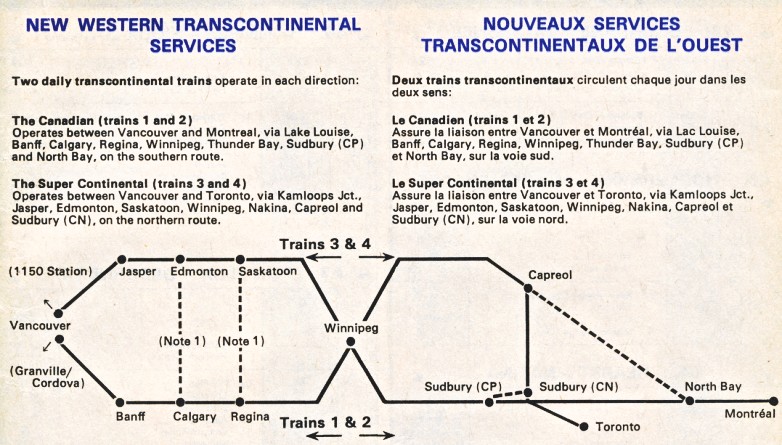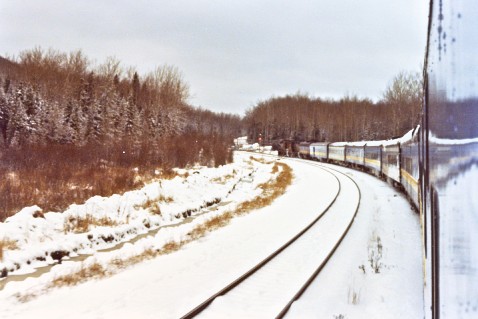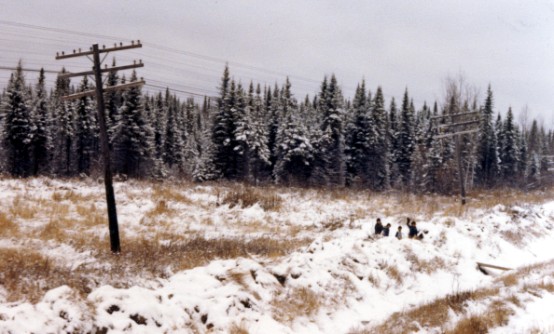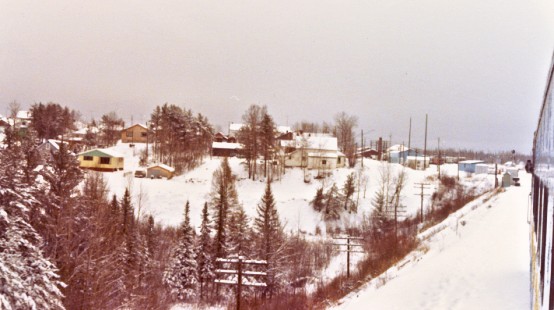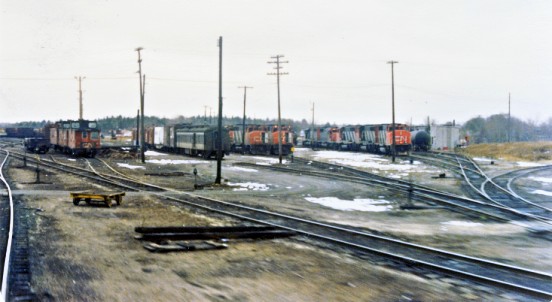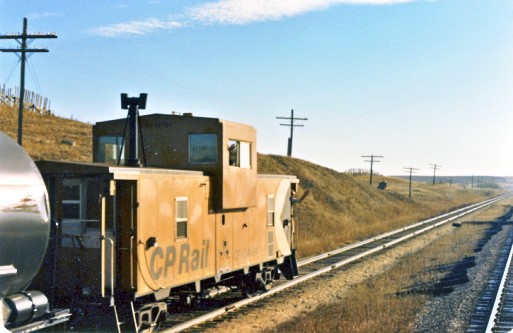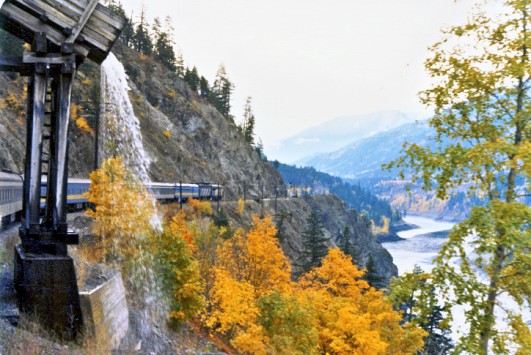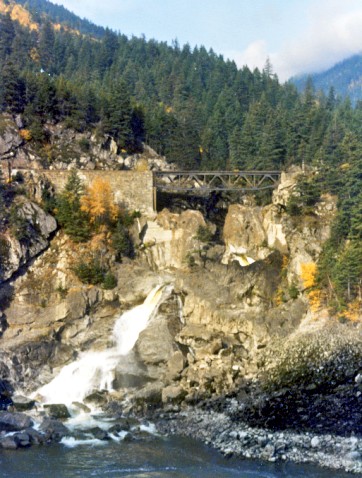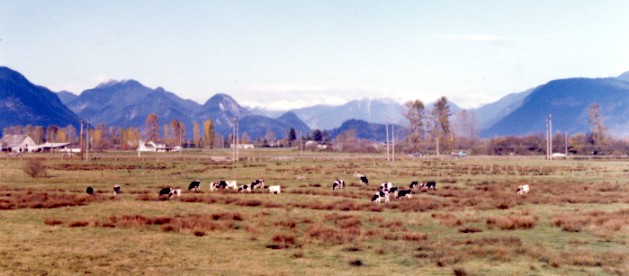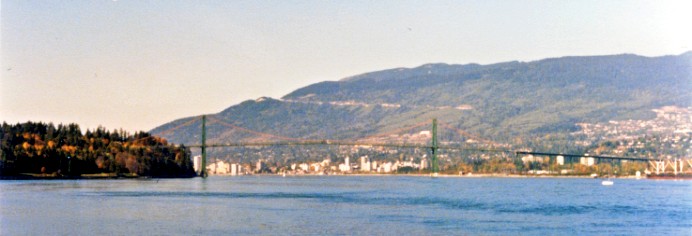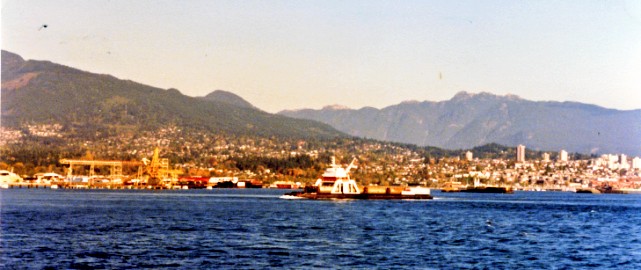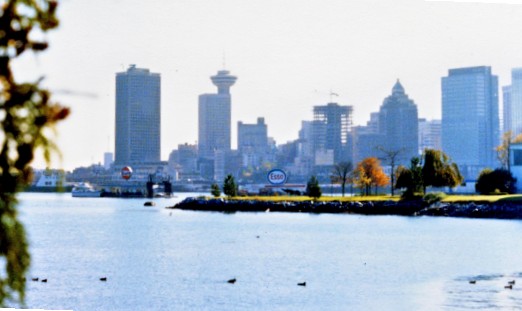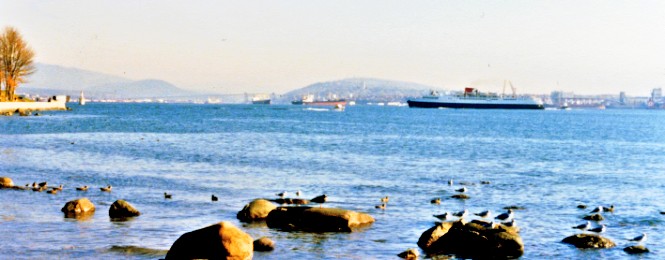Here, we are leaving a northern
Ontario railway settlement. Below us, you can see the large earthen
fill which the Canadian Northern Railway must have put in place.
Looking back along the last car of our train, you can
see the kerosene marker light hanging on the corner.
It's daytime, so
the flagman (tail end trainman) does not have it lit.
The fact that two
markers are hanging from this car makes our train "official" as far as
the operating rules are concerned.
To railroaders, markers were like
the period at the end of a sentence
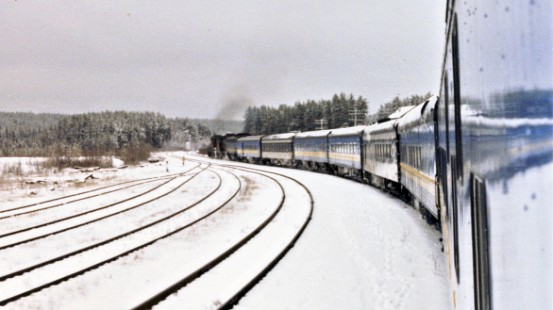
The 4100s are pulling hard.
This extra photograph of the train's equipment is included for any consistadores out there.
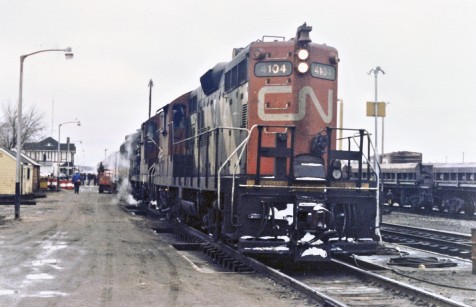
Someone will know the location of this
photograph by the appearance of the station (Nakina?). This is our train stopped
for a crew change and servicing. These first generation diesel
locomotives from the 1950s were used for freight or passenger service.
For passenger service, they had to have the ability to generate,
conduct or control steam for train interior heat and hot water heating.
This wasn't the only practice coming from the steam locomotive era
involving these units ... Instead of having the engine crew looking out
the short end of the locomotive where forward visibility was better,
the CNR chose to have the long hood forward. This gave engine crew
protection comparable to that of a steam locomotive in the event of a
collision. (A little study in implementing change in the workplace)
The locomotive controls are located at the right side of a locomotive
(during normal forward operation)
and this determines which end of the
locomotive is designated as "front".
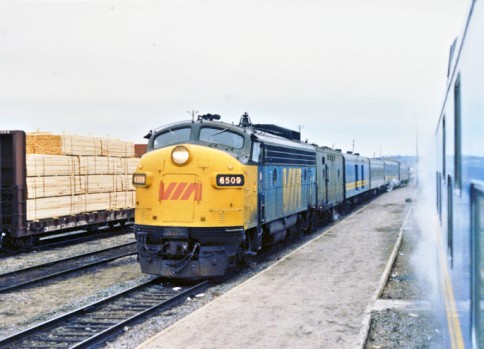
In the previous orange and black freight-model units, the
crew is protected by lots of steel.
In the yellow and blue high speed passenger unit of
similar vintage above, the crew is protected by height against level
crossing accidents.
As we sit at the station, an eastbound passenger (Train 676 ?) with a steam
generator car behind the locomotive sits and steams a little.
Notice the up and down pattern of my car's roomette windows.
And don't worry about the steam leaking from our train's heating system
- I bought carbon-offset credits before going on this trip.
In fact, the carbon sinks I purchased are right there ... on that bulkhead flat.
( climate change gallows humour )
We're really getting out of town as I
photograph back toward the yard. Of all the quaint, now vanished things pictured, I
kind of like the kerosene switch lamp
... see it on the low switch
stand of the caboose track?

Here we're banging along, perhaps
approaching the Sioux Lookout area of northern Ontario.
If you were
working as tailend crew and you observed that the tie damage (left of centre between the
rails) was FRESH, you'd be stopping the train for an inspection.

Winnipeg Union Station at night.
Switching passenger cars for different destinations.
Replenishing onboard stores with clean sheets, pillow cases, linen, food, and water.
Eastern onboard service crews go off duty - later to return to Montreal or Toronto.
Western service crews board - and check their equipment, supplies and passengers before riding to Vancouver with us.
Red dwarf signals brighten the yard.
Ventilation fans whir and steam lines make a hollow hissing sound.
A tailend trainman stands ready by a step stool, and an open sleeping car door.
The green Fresnel lens of a tailend marker is illuminated by a kerosene flame.
The final magic moments before a night train departs.
THIRD DAY ON TRAIN
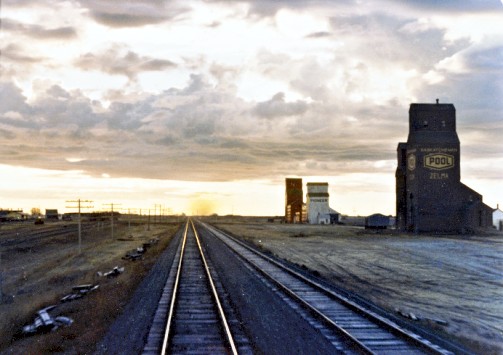
Just before sunrise we are whipping through Zelma on the approach to
Saskatoon.
To the right is a passing track. A grain elevator lead
(track) services the elevators.
A smudge of diesel exhaust on the
horizon gives you an idea of our speed on this windless morning -
probably close to 90 MPH.
Saskatoon
In addition to getting new onboard service crews at Winnipeg, we swapped for a
couple of "F" units complete with "Mastercraft" plug-in ditch lights ...
to
help the engine crew spot obstructions as we go through the winding
mountain railway ahead.
The sun is just coming up and the ties are frosty.
Happily reliving my brief CP Rail
career, highballs are exchanged with a CP Rail tailend crew.
Their
track of bolted rail ran parallel to our CNR route for a distance.
FOURTH DAY ON THE TRAIN
Following the right-of-way built by Mackenzie and Mann of the Canadian
Northern Railway,
we are near the confluence of the Thompson and Fraser
Rivers as they join to travel to the Pacific Ocean.
Travelling all night (from Jasper) through the mountains, the ditchlights have been handy to have.
